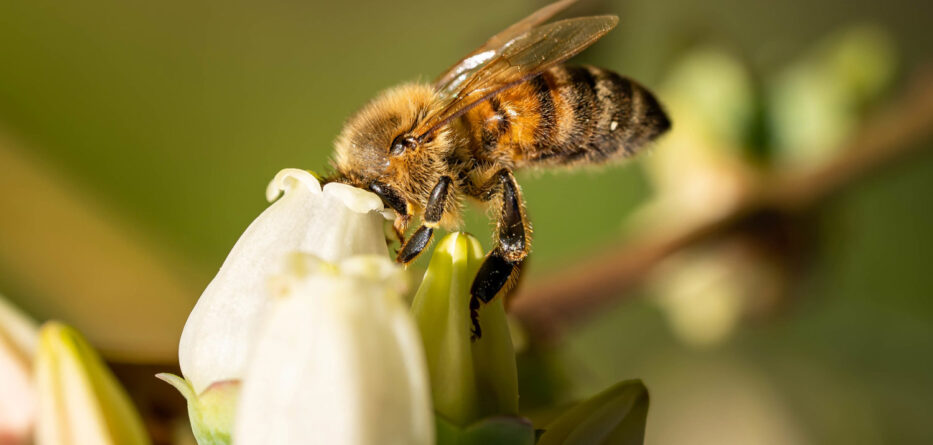Roddy Scheer & Doug Moss
EarthTalk
The beekeeping industry is in crisis as honeybee deaths have reached record levels in the U.S. While honeybee colonies have begun declining at a noticeable frequency over the past decade, the U.S. experienced the worst die-off yet, with 62 percent of commercial honeybee colonies collapsing between June 2024 and January 2025. This rapid decline in population may be “the biggest loss of honeybee colonies in U.S. history,” explained Scott McArt, a Cornell University associate professor of entomology.
Honeybees are among the most efficient pollinators; as they play a crucial role in the ecosystem and food production. In fact, they pollinate around 75 percent of the plants grown in the U.S., contributing to approximately $18 billion worth of crops. Blake Shook, a Texas beekeeper and founder of The Bee Supply, told CBS News that if present trends continue, the food industry could collapse as “we cannot pollinate at the scale that we need to produce food in the United States.”
What is behind this massive die-off? Scientists have identified the Varroa mite as the main cause; infection by these parasitic mites weakens honeybees by spreading viruses, suppressing their immune systems, and hindering their ability to break down pesticides. Alarmingly, more than 98 percent of the dead colonies in the U.S. have tested positive for viruses spread by Varroa infestations. Recent research found that all Varroa mites have developed resistance to Amitraz, the only remaining pesticide that gets rid of these mites. The extensive use of Amitraz not only contributed to the decline in bee populations but also posed environmental risks, with potential effects on ecosystems and non-target organisms.
However, the mites alone weren’t responsible for the record die-offs last year. The causes behind the massive decline in bees are complex, as biodiversity loss, climate change and shifting weather patterns have also contributed. A major contributor is the spread of monoculture agriculture and urbanization, which have drastically reduced the diversity of flowers and plants, limiting the food sources bees rely on. Moreover, global warming has brought unusually warm winters, causing plants to shift their blooming schedules earlier and thus leaving bees with fewer supplies of flowers after they emerge from hibernation.
This population decline isn’t just a problem for the bee industry but a threat to national food security. To help honeybee populations stabilize and grow, individuals can purchase local honey directly from beekeepers to support the local industry and plant native wildflowers or bee-friendly flowers like sunflowers, poppies and lavender. Finally, urging corporations and bee farms to reduce the sale and usage of harmful pesticides is also effective in protecting bee populations.
CONTACTS: Scientists identify culprit behind biggest ever U.S. honey bee die-off, science.org/content/article/scientists-identify-culprit-behind-biggest-ever-u-s-honeybee-die.
EarthTalk® is produced by Roddy Scheer & Doug Moss for the 501(c)3 nonprofit EarthTalk. See more at https://emagazine.com. To donate, visit https://earthtalk.org. Send questions to: [email protected].





